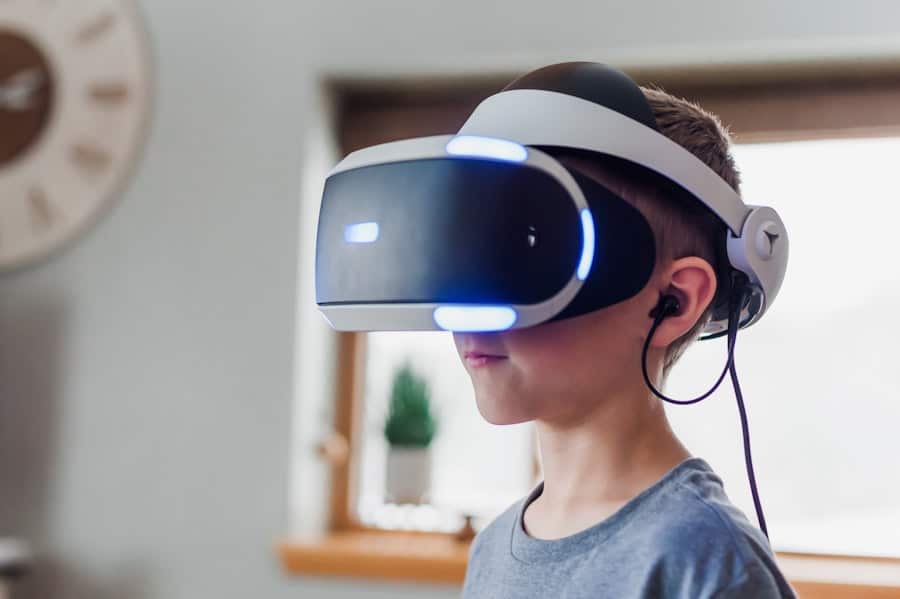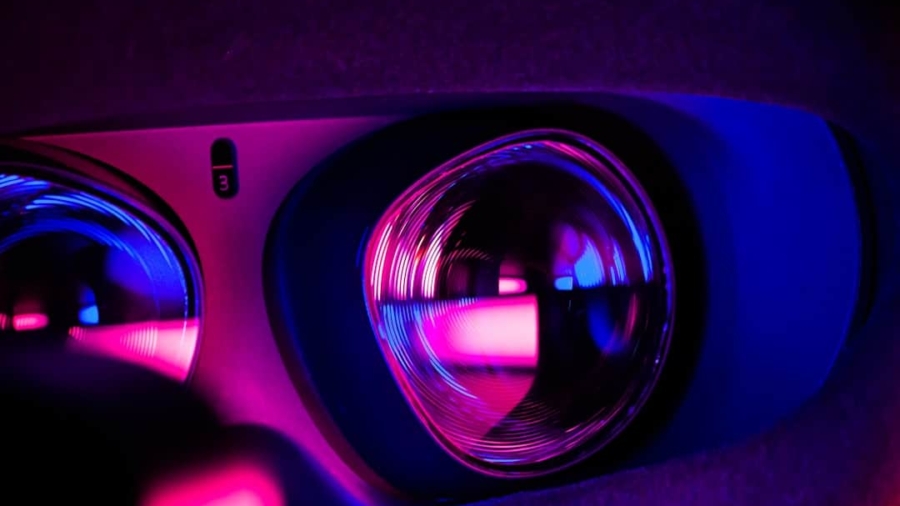Augmented Reality (AR) has emerged as a transformative technology in various sectors, and its application in product prototyping is particularly noteworthy. By overlaying digital information onto the physical world, AR allows designers and engineers to visualize and interact with their products in real-time, enhancing the prototyping process significantly. This technology bridges the gap between the conceptual and the tangible, enabling teams to create more effective prototypes that can be tested and refined before moving into production.
The integration of AR into product development not only streamlines workflows but also fosters innovation by allowing for rapid iterations and modifications. The rise of AR in product prototyping is driven by advancements in hardware and software technologies, making it more accessible to businesses of all sizes. With the proliferation of smartphones, tablets, and AR glasses, designers can now utilize AR tools to create immersive experiences that facilitate better understanding and communication of design concepts.
This shift is particularly beneficial in industries such as automotive, consumer electronics, and fashion, where visualizing complex designs can be challenging. As companies increasingly recognize the potential of AR, it is becoming a standard practice in the prototyping phase, leading to more efficient and effective product development cycles.
Key Takeaways
- Augmented reality (AR) is a technology that superimposes digital information, such as 3D models and animations, onto the real world, making it a valuable tool for product prototyping.
- Using AR for product prototyping offers benefits such as improved visualization, reduced time and cost, enhanced collaboration, and better user testing.
- AR is changing the product design process by allowing designers to visualize and interact with virtual prototypes in real-world environments, leading to more informed design decisions.
- AR plays a crucial role in collaborative product development by enabling teams to work together on virtual prototypes regardless of their physical location, leading to faster and more efficient development cycles.
- AR and rapid prototyping go hand in hand, as AR technology can be used to visualize and interact with physical prototypes in real time, allowing for quick iterations and improvements.
- Implementing AR for product prototyping comes with challenges such as technical limitations, cost, and the need for specialized skills, but these can be overcome with proper planning and investment.
- AR is also valuable for user testing of product prototypes, as it allows for realistic simulations and interactions, leading to more accurate feedback and insights for further improvements.
- The future of AR in product prototyping looks promising, with advancements in AR technology, increased adoption, and integration with other emerging technologies such as artificial intelligence and Internet of Things.
The Benefits of Using Augmented Reality for Product Prototyping
One of the most significant advantages of using Augmented Reality in product prototyping is the ability to visualize designs in a real-world context. Traditional prototyping methods often rely on physical models or 2D drawings, which can limit understanding and hinder collaboration among team members. In contrast, AR allows stakeholders to see a 3D representation of a product superimposed onto its intended environment.
This capability not only enhances comprehension but also enables designers to identify potential issues early in the development process, reducing costly revisions later on. Moreover, AR facilitates enhanced collaboration among cross-functional teams. With AR tools, designers, engineers, and marketers can interact with the same digital prototype simultaneously, regardless of their physical location.
This shared experience fosters open communication and encourages feedback from diverse perspectives, ultimately leading to a more refined final product. For instance, a team working on a new consumer gadget can use AR to showcase its features and functionalities to marketing personnel, who can then provide insights on user experience and marketability. This collaborative approach ensures that all aspects of the product are considered during the prototyping phase.
How Augmented Reality is Changing the Product Design Process

The integration of Augmented Reality into the product design process is revolutionizing how products are conceived and developed. Traditionally, designers would create multiple iterations of a prototype before arriving at a final version. This process can be time-consuming and resource-intensive.
However, with AR, designers can quickly modify digital prototypes based on real-time feedback, allowing for rapid iteration cycles. For example, if a designer wants to test different color schemes or materials for a product, they can easily adjust these elements within the AR environment without needing to create new physical models. Additionally, AR enhances the design process by providing tools for simulation and analysis.
Designers can use AR to simulate how a product will function in various scenarios, such as testing its ergonomics or assessing its performance under different conditions. This capability allows for more informed decision-making and helps identify potential design flaws before they become costly problems during production.
The Role of Augmented Reality in Collaborative Product Development
Collaboration is a cornerstone of successful product development, and Augmented Reality plays a pivotal role in enhancing teamwork across various disciplines. In many organizations, product development involves multiple stakeholders with different expertise—designers, engineers, marketers, and even end-users. AR provides a platform where these diverse groups can come together to visualize and interact with prototypes in a shared space.
This collaborative environment fosters creativity and innovation as team members can brainstorm ideas and provide immediate feedback on design elements. Furthermore, AR enables remote collaboration, which has become increasingly important in today’s globalized workforce. Teams spread across different geographical locations can utilize AR applications to conduct virtual meetings where they can view and manipulate 3D prototypes together.
For instance, an engineering team in one country can collaborate with designers in another by using AR to visualize how components fit together in real-time. This capability not only saves time but also reduces travel costs associated with traditional face-to-face meetings. As remote work continues to be a norm for many organizations, the role of AR in facilitating collaboration will only grow.
Augmented Reality and Rapid Prototyping
Rapid prototyping is an essential aspect of modern product development that emphasizes speed and efficiency in creating prototypes. Augmented Reality complements this approach by allowing designers to quickly generate and modify digital prototypes without the need for extensive physical resources. With AR tools, designers can create virtual models that can be tested and iterated upon almost instantaneously.
This rapid feedback loop accelerates the prototyping process significantly compared to traditional methods that often involve lengthy manufacturing times for physical models. Moreover, AR enhances the user experience during rapid prototyping by enabling interactive simulations. Designers can present their prototypes to stakeholders or potential users through AR applications that allow them to engage with the product virtually.
For example, a furniture designer could use AR to show how a new chair would look in a customer’s living room by overlaying a 3D model onto their actual space using a smartphone or tablet.
Overcoming Challenges in Implementing Augmented Reality for Product Prototyping

Initial Investment and Cost Prohibitions
One significant challenge is the initial investment required for AR technology. While costs have decreased over time, acquiring high-quality AR software and hardware can still be prohibitive for smaller companies or startups.
Training and Integration Challenges
Additionally, training employees to effectively use AR tools requires time and resources that some organizations may not readily have. Ensuring compatibility between AR applications and existing design software or systems is another challenge. Many companies have established workflows that rely on specific tools for design and prototyping; integrating AR into these processes may require significant adjustments or even complete overhauls of existing systems.
Overcoming Resistance to Change
Furthermore, there may be resistance from team members who are accustomed to traditional methods of prototyping and may be hesitant to adopt new technologies. To overcome these challenges, organizations must invest in training programs that emphasize the benefits of AR while also providing ongoing support as teams transition to new workflows.
Augmented Reality and User Testing for Product Prototypes
User testing is a critical phase in product development that helps ensure that products meet user needs and expectations before they reach the market. Augmented Reality enhances this process by allowing designers to conduct immersive user testing sessions with their prototypes. Instead of relying solely on surveys or focus groups with static models or images, designers can present users with interactive 3D prototypes that they can manipulate and explore in real-time.
For instance, an automotive company could use AR to allow potential customers to experience a new car model virtually before it is manufactured. Users could sit inside a virtual version of the car, interact with its features, and provide feedback on aspects such as comfort, usability, and aesthetics. This level of engagement offers richer insights than traditional testing methods and enables designers to make data-driven decisions based on actual user interactions with their products.
The Future of Augmented Reality in Product Prototyping
As technology continues to evolve, the future of Augmented Reality in product prototyping looks promising. Advancements in artificial intelligence (AI) and machine learning are expected to enhance AR applications further by enabling more sophisticated simulations and predictive analytics during the design process. For example, AI algorithms could analyze user interactions with prototypes in real-time and suggest design modifications based on user behavior patterns.
Moreover, as AR hardware becomes more advanced—such as through improvements in wearable devices like smart glasses—designers will have even greater capabilities for immersive visualization and interaction with their prototypes. The integration of haptic feedback technology could also allow users to feel textures or resistance when interacting with virtual objects, creating an even more realistic experience during testing phases. In conclusion, as organizations increasingly adopt Augmented Reality for product prototyping, we can expect to see significant shifts in how products are designed, developed, and tested.
The potential for enhanced collaboration, rapid iteration cycles, and immersive user experiences positions AR as a key player in shaping the future landscape of product development across various industries.
A related article to How Augmented Reality is Reshaping Product Prototyping is “The Ultimate Guide to the Best Lighting Design Software of 2023” which can be found at this link. This article explores the latest advancements in lighting design software and how it can enhance the prototyping process by providing realistic lighting simulations for products. By incorporating cutting-edge technology like augmented reality and top-notch software tools, designers can create more accurate and visually appealing prototypes.
FAQs
What is augmented reality (AR)?
Augmented reality (AR) is a technology that superimposes computer-generated images, information, and sensory experiences onto the real world, typically viewed through a smartphone, tablet, or AR glasses.
How is augmented reality reshaping product prototyping?
Augmented reality is reshaping product prototyping by allowing designers and engineers to visualize and interact with 3D models of products in a real-world environment. This enables them to test and refine designs more effectively, collaborate remotely, and make faster decisions.
What are the benefits of using augmented reality for product prototyping?
Some benefits of using augmented reality for product prototyping include faster iteration and design cycles, reduced costs for physical prototypes, improved collaboration among team members, and the ability to visualize and test products in real-world contexts.
What industries are using augmented reality for product prototyping?
Industries such as automotive, aerospace, consumer electronics, healthcare, and architecture are using augmented reality for product prototyping. It is also being used in areas such as fashion, gaming, and education for prototyping and visualization purposes.
What are some popular augmented reality tools for product prototyping?
Popular augmented reality tools for product prototyping include platforms like Unity, Unreal Engine, and ARKit/ARCore for creating AR experiences, as well as software like SketchUp, SolidWorks, and Autodesk Fusion 360 for creating 3D models that can be viewed in AR.

